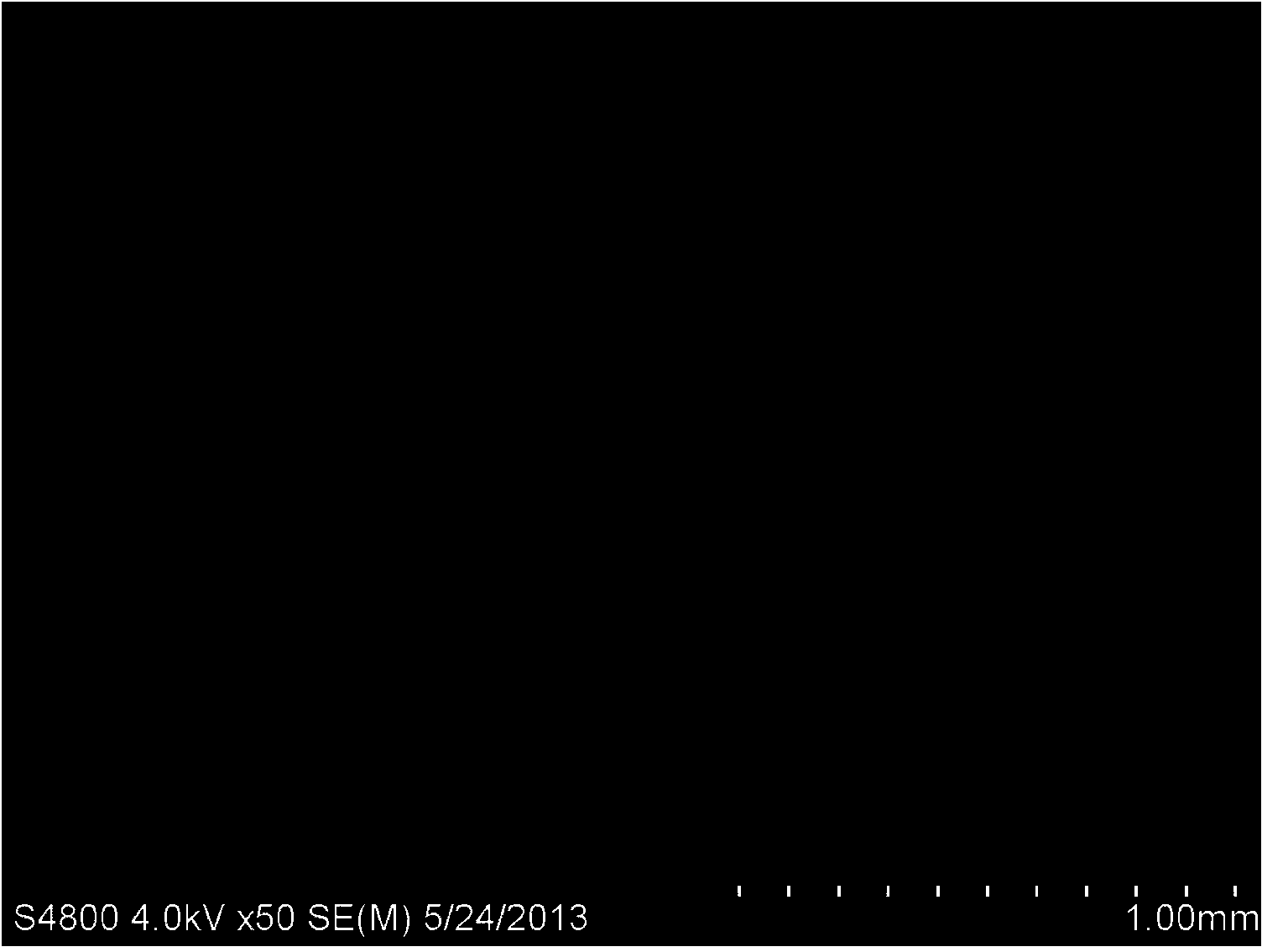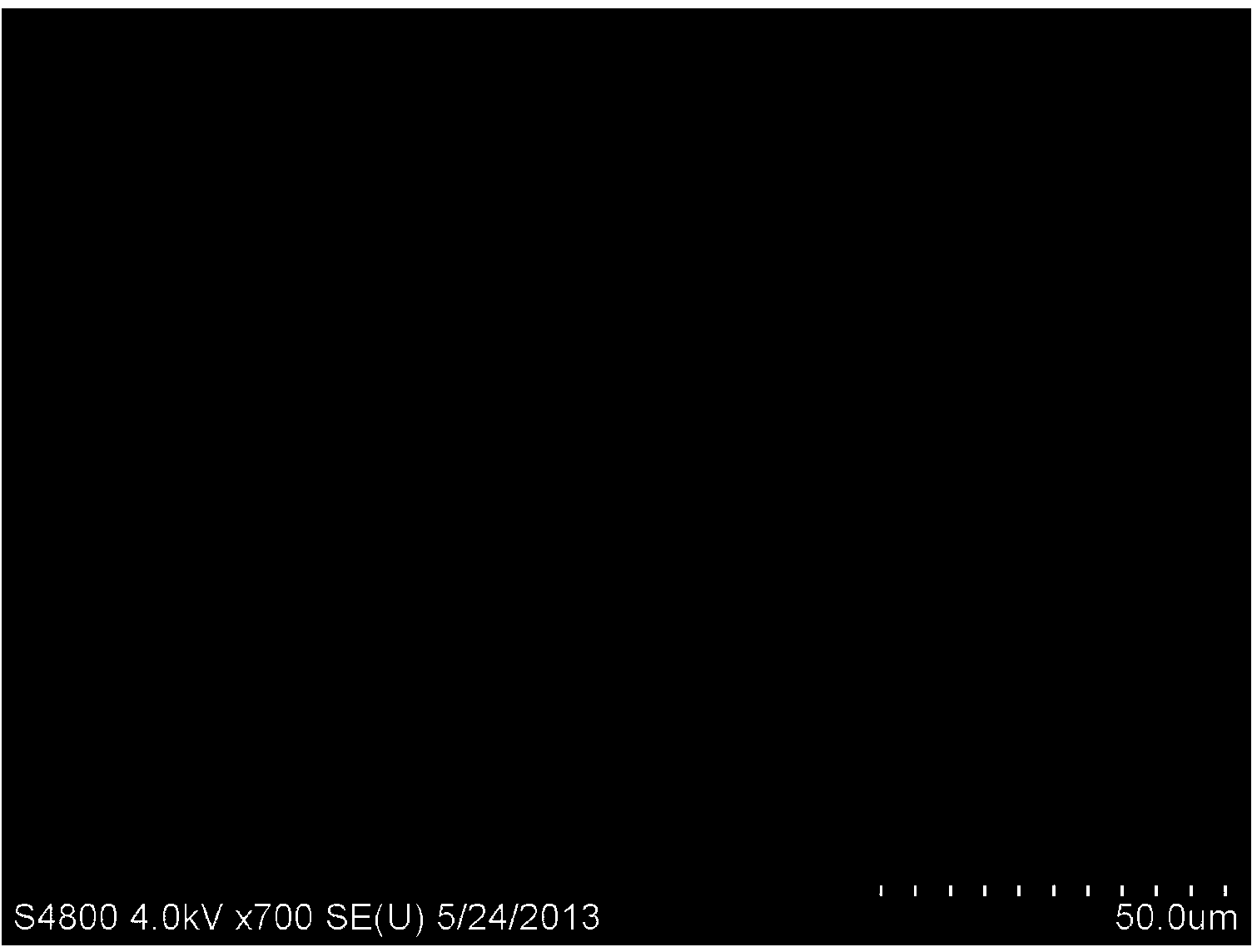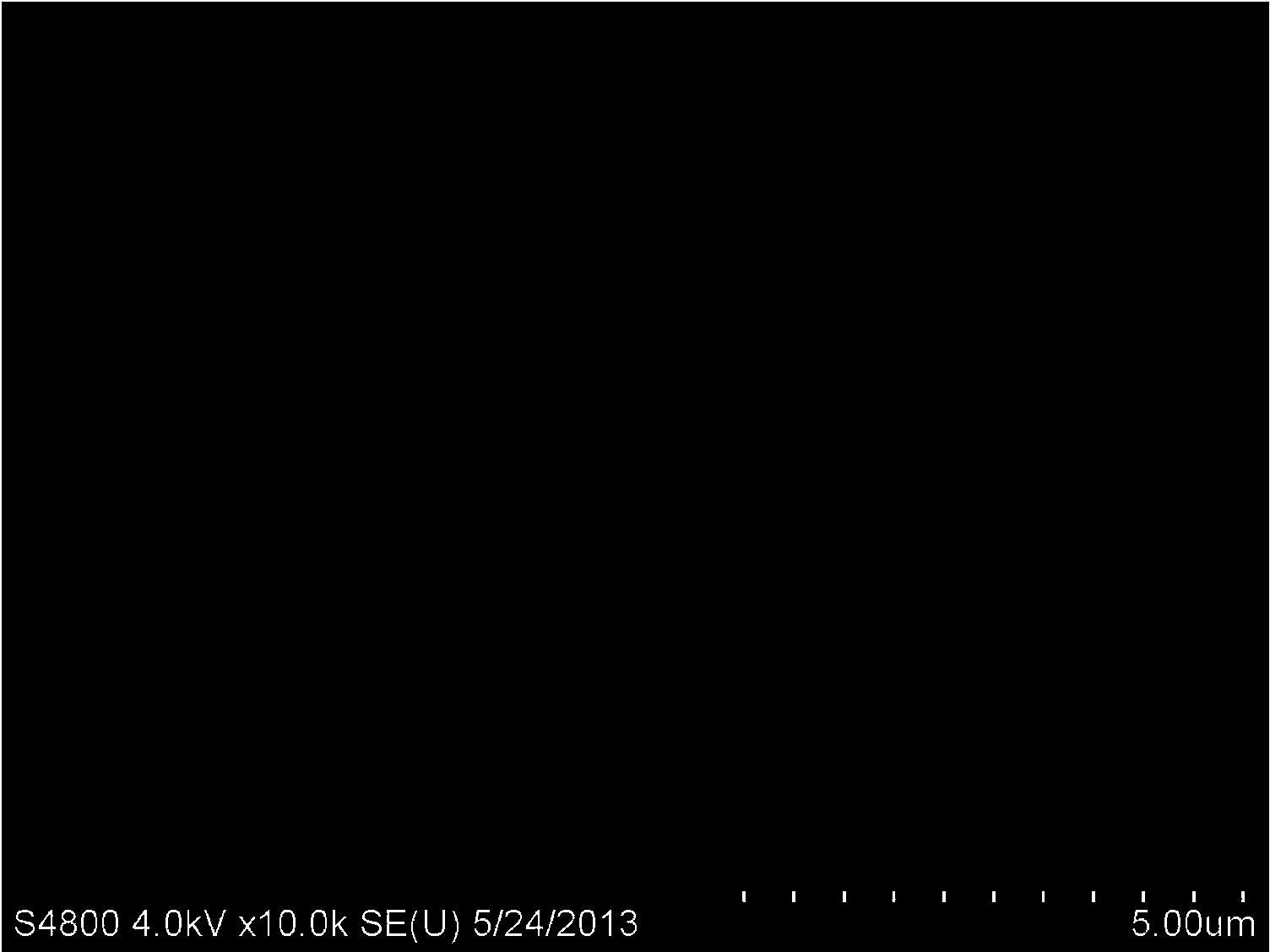Preparation method for microporous membrane having multi-scale gradient micro-structure surface
A microporous membrane and multi-scale technology, applied in the field of membrane separation, can solve problems such as surface roughness, singleness, and mechanical property defects, and achieve the effects of high mechanical properties of the membrane, simple process, and controllable membrane area
- Summary
- Abstract
- Description
- Claims
- Application Information
AI Technical Summary
Problems solved by technology
Method used
Image
Examples
Embodiment 1
[0032] Step (1). Dissolve 15g of polyvinylidene fluoride in 85g of triethyl phosphate, stir at 80°C for 24 hours at a stirring speed of 500 rpm to obtain 100g of a homogeneous solution;
[0033] Step (2). Such as Figure 4As shown, the 90g / m 2 Polyethylene terephthalate non-woven fabric is fixed as the first layer, 10-mesh polyester is fixed on the upper surface of the first layer, and 10-mesh polyester is used as the second layer, and then the prepared uniform solution is taken off by standing. After soaking for 12 hours, evenly coat the upper surface of the second layer. During the coating process, the thickness of the solution is constant at 200 μm, and the coating speed is fixed at 50 mm / s;
[0034] Step (3). The polyethylene terephthalate non-woven fabric coated with the polymer solution is transferred to a 25°C coagulation bath and immersed for 5s, then transferred to a 25°C deionized water bath, and immersed for 24 hours to polymerize The solidification solution is so...
Embodiment 2
[0039] Step (1). Dissolve 20g of polysulfone and 4g of polyethylene glycol 600 in 76g of N,N-dimethylacetamide, stir at 60°C for 12 hours at a stirring speed of 700 rpm to obtain 100g of a homogeneous solution ;
[0040] Step (2). Add 120g / m 2 The polypropylene non-woven fabric is fixed as the first layer, 2000 mesh polypropylene fiber is fixed on the upper surface of the first layer, and the 2000 mesh polypropylene fiber is used as the second layer. On the upper surface of the second layer, the thickness of the solution is kept constant at 300 μm during the coating process, and the coating speed is fixed at 20 mm / s;
[0041] Step (3). The polypropylene non-woven fabric coated with the polymer solution is directly transferred to a 25° C. deionized water bath, and submerged for 12 hours to solidify the polymer solution into a film;
[0042] Step (4). Separate the polypropylene non-woven fabric and the polymer microporous membrane in a wet state at a mechanical peeling speed o...
Embodiment 3
[0045] Step (1). Dissolve 10 g of cellulose acetate and 6 g of polyethylene glycol 200 in 84 g of N, N-dimethylformamide, stir at 60° C. for 24 hours at a stirring speed of 500 rpm to obtain 100 g of a homogeneous solution ;
[0046] Step (2). Add 60g / m 2 The high-density polyethylene woven fabric is fixed as the first layer, 100-mesh nylon is fixed on the upper surface of the first layer, and 100-mesh nylon is used as the second layer. Coating on the upper surface of the second layer, the thickness of the solution is constant at 100 μm during the coating process, and the coating speed is fixed at 100 mm / s;
[0047] Step (3). The high-density polyethylene woven fabric coated with the polymer solution is directly transferred to a 35° C. deionized water bath, and immersed for 18 hours to solidify the polymer solution into a film;
[0048] Step (4). After the polymer microporous membrane with high-density polyethylene woven fabric is naturally dried in the air, remove the high-...
PUM
| Property | Measurement | Unit |
|---|---|---|
| Mesh | aaaaa | aaaaa |
Abstract
Description
Claims
Application Information
 Login to View More
Login to View More - R&D
- Intellectual Property
- Life Sciences
- Materials
- Tech Scout
- Unparalleled Data Quality
- Higher Quality Content
- 60% Fewer Hallucinations
Browse by: Latest US Patents, China's latest patents, Technical Efficacy Thesaurus, Application Domain, Technology Topic, Popular Technical Reports.
© 2025 PatSnap. All rights reserved.Legal|Privacy policy|Modern Slavery Act Transparency Statement|Sitemap|About US| Contact US: help@patsnap.com



